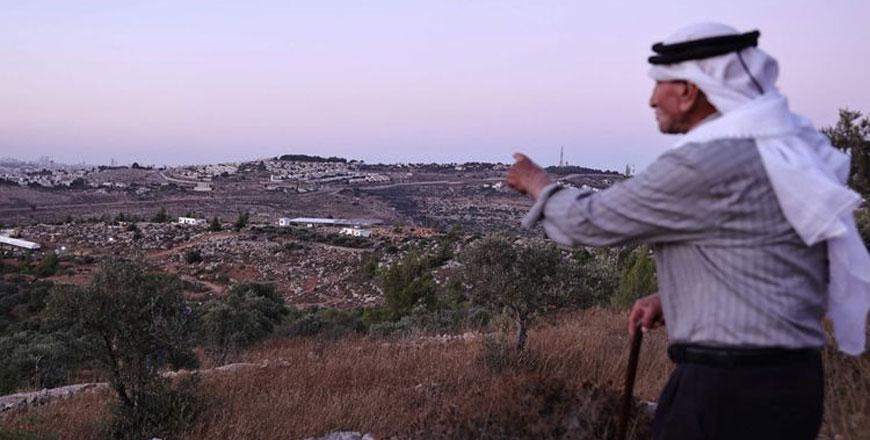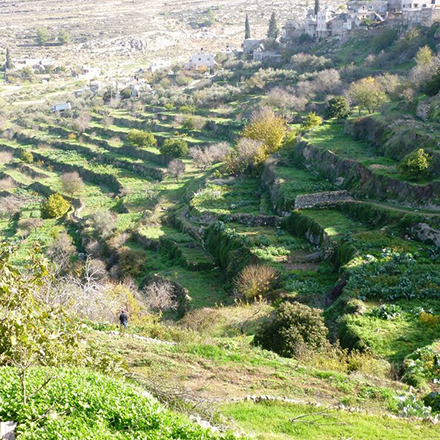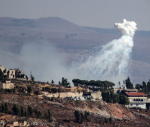OCCUPIED JERUSALEM — Israel’s top court has given the government two months to explain why it has not proposed an alternative route for the West Bank separation wall in a valley near Jerusalem.
The decision, handed down by the High Court Monday, relates to an appeal by Palestinian residents of Beit Jala, who say the proposed route would separate them from their olive groves and divide the local Christian community.
The residents say that if the barrier is built through the Cremisan Valley, 58 families would lose their land and the Roman Catholic Salesian order’s properties would be split, leaving a monastery on the Israeli side and a convent on the Palestinian side.
The Cremisan Valley lies between the sprawling settlement neighbourhood of Gilo in annexed east Jerusalem, and the smaller West Bank settlement of Har Gilo, just a few kilometres to the southwest.
At a hearing last week, the Council for Peace and Security, a group of former high-ranking security officials, proposed an alternative route for the barrier it said would save most of the villagers’ land and better ensure Israel’s security needs.
On Monday, the court ordered the defence ministry to explain in writing “why other alternatives to the route of the fence were not examined... and why an alternative route had not been adopted.”
It also asked why four seizure orders relating to Palestinian land in the Cremisan Valley had not been cancelled.
The ministry has until April 10 to respond.
If the barrier is built along the route proposed by the ministry, the villagers and the Salesian order stand to lose 3000 dunams (300 hectares/741 acres) of land, 700 of which belongs to the church.
But if it follows the route proposed by the Council for Peace and Security, no land will be seized, figures from St Yves Catholic rights group show.
“We definitely have new hope — the answer of the court is a good sign,” said a statement from Zvi Avni, legal counsel for St Yves, which represents the convent and its school.
The same court is considering a separate appeal against the barrier’s route lodged by residents of the nearby Palestinian village of Battir, who say it will destroy its ancient terraces and a Roman-era irrigation system.
On Sunday, the court ordered Israel Railways and the defence ministry to look into the possibility of removing one of the two railway tracks that run near Battir to enable an alternative route, giving them until February 27 to respond.
Friends of the Earth Middle East said the court appeared to be “extremely reluctant to let the military remove a single stone terrace”.
The group said it believes that due to the area’s topography, “it is not possible to build the type of physical structure that the military is proposing without destroying several hundred metres of ancient stone terrace walls.”
In a separate case pertaining to the barrier, Human Rights Watch accused Israel of “severely harming livelihoods” in the Palestinian village Nabi Samuel, just north of Jerusalem, due to works to create an archaeological site on part of the area.
Nabi Samuel has since 2007 been cut off from the West Bank, and most of its residents are not allowed to enter Israel to work.
“It is cruel to now make a tourist attraction out of the part of the village the military destroyed” in 1971, HRW Middle East and North Africa director Sarah Leah Whitson said, calling on Israel to let the seven Nabi Samuel families who fled during the 1967 war “return and rebuild”.
Israel began building the barrier in 2002 at the height of the second Palestinian intifada, or uprising, arguing that its construction was crucial for security. But the Palestinians see it as a land grab aimed at stealing part of their future state.
UN figures show that Israel has already built around two-thirds of the barrier — a network of towering concrete walls, barbed-wire fences, trenches, and closed military roads that will extend 712 kilometres when completed.
Only 15 per cent of the barrier follows the Green Line, which is recognised by the international community as the border of Israel proper, with the rest inside the West Bank.



















